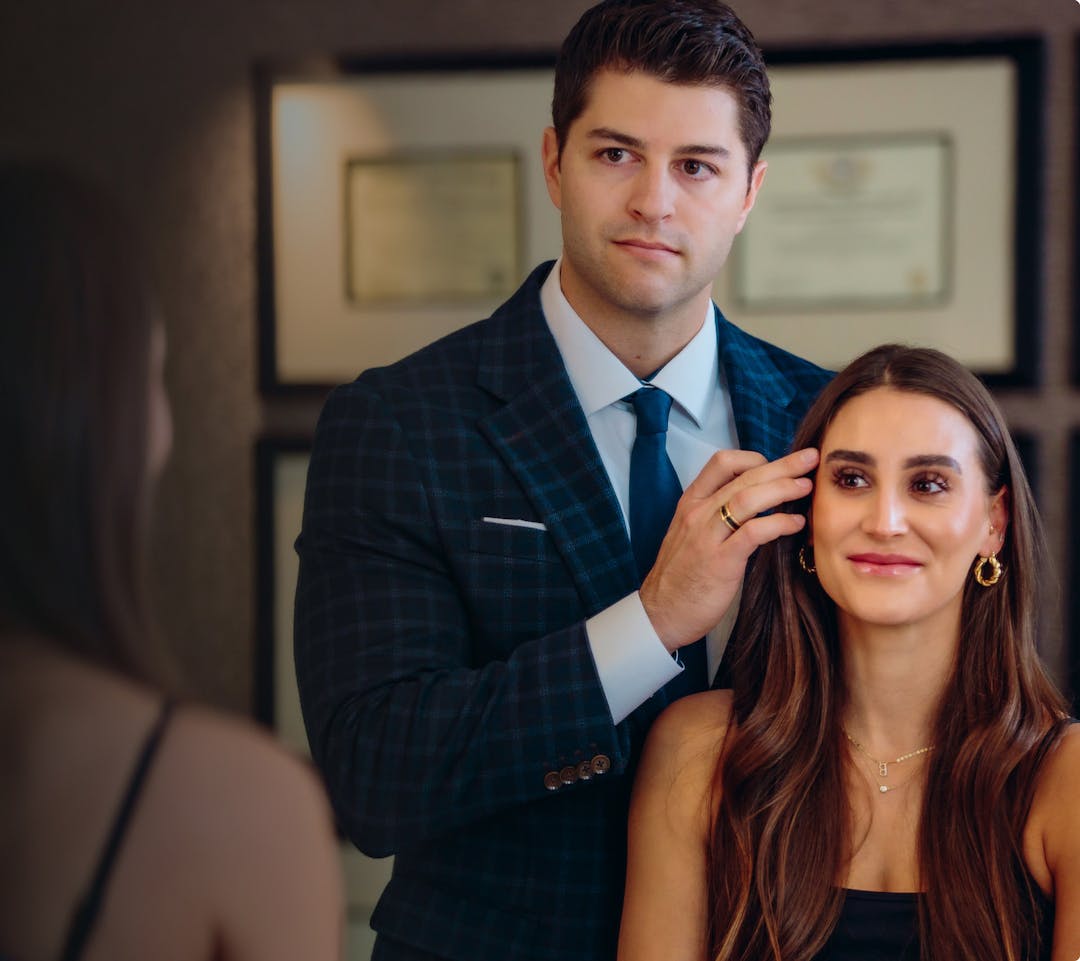Rhinoplasty is a popular cosmetic procedure that balances, refines, and reshapes the nose, addressing imperfections in the nasal tip, bridge, and nostrils. If a patient also suffers from functional concerns due to a deviated septum or inferior turbinate hypertrophy, rhinoplasty can be combined with septoplasty and/or inferior turbinate reduction, procedures to restore clear, unobstructed breathing.
In this blog, our team of highly specialized facial plastic surgeons at Caniglia Facial Plastic Surgery explores the power of combining these transformative nose surgeries to optimize results, confidence, and well-being.
What Is a Deviated Septum?
The septum is a thin, flexible strip of cartilage and bone that separates the nostrils and splits the nose into two chambers. While it is supposed to be centered, allowing equal amounts of air to flow through both chambers, in many patients, it leans to one side, narrowing the left or right passageway. The septum may also be crooked, uneven, or damaged.
What Are the Symptoms of a Deviated Septum?
When septum deviation is minor and does not cause any issues for the patient, intervention is not required. However, in more severe cases, patients may experience a lowered quality of life due to the following symptoms and seek out treatment:
- Problems breathing through one or both nostrils
- Ongoing nasal congestion
- Chronic headaches
- Pressure in the nose and face
- Pain and discomfort
- Recurring infections
- Obstructive sleep apnea (OSA)
Patients experiencing these issues should be examined by a doctor who can perform a nasal endoscopy to investigate the nasal chambers and review the position and condition of the septum.
Differences Between Rhinoplasty and Septoplasty
While rhinoplasty can be performed post-injury or to address genetic conditions, it is strictly a cosmetic procedure targeting the outside of the nose and is not considered functional. Septoplasty, on the other hand, has no purposeful cosmetic component. It is performed to correct a deviated septum and restore the free flow of air through the nasal passageways, which can alleviate a range of uncomfortable symptoms.
Combining Rhinoplasty and Septoplasty
For patients who seek both a cosmetic makeover and increased breathing function, a combination rhinoplasty and septoplasty procedure is often the best course of action. Performing aesthetic nose surgery after a septoplasty is unwise, as the septal cartilage is no longer available, and the surgeon may have to take cartilage from the ear or other sources to complete the procedure. For this reason, undergoing the two procedures in tandem is the most beneficial for patients and also allows for lower costs and reduced downtime.
Benefits of a Combined Rhinoplasty and Septoplasty Procedure
Pairing rhinoplasty with septoplasty offers a range of compelling benefits, including the following:
- Improved balance, harmony, and proportion in the profile
- Increased symmetry
- A more refined nasal bridge and tip
- Enhanced breathing
- Better sleep
- A reduction in headaches and facial pain
- Heightened quality of life
- A boost in confidence and self-esteem
- Cost-effective
- Consolidates recovery time
- Minimizes overall surgical risks
What Is the Surgical Process With a Combined Rhinoplasty and Septoplasty?
A combined rhinoplasty and septoplasty is performed through a series of steps as follows:
Consultation—To get started, you will need to undergo a detailed consultation with a board-certified plastic surgeon who specializes in rhinoplasty and septoplasty. During this initial meeting, the doctor will assess your nasal structure, listen to your aesthetic goals, and create a customized surgical plan that meets your needs.
- Anesthesia – Twilight anesthesia will be administered, allowing you to sleep deeply while your surgeon refines your nasal appearance and restructures your septum to improve breathing and well-being.
- Surgery – Your surgeon will choose from open rhinoplasty with an incision placed across the columella or closed rhinoplasty, with incisions placed on the inside of the nose. Once the doctor has access to the internal bone and cartilage of the nose, they will repair the septal deviation, remove excess tissue, and reshape the nose for an elegant, natural-looking result.
- Incision closure – Once all changes have been completed, the surgeon will seal the incisions with fine sutures and support the nose with a splint to protect its new structure.
Thinking About Undergoing Rhinoplasty and Septoplasty? Contact Caniglia Facial Plastic Surgery Today for a Private Consultation!
Dr. Ron Caniglia has over 30 years of experience and double board certification in Facial Plastic and Reconstructive Surgery and Otolaryngology Surgery, providing patients seeking rhinoplasty and septoplasty with access to today’s most advanced surgical techniques and solutions. Dr. Alex Caniglia, a fellowship-trained facial plastic surgeon, has performed over 2,000 successful procedures, excelling in the art of nasal refinement and reconstruction. Both doctors offer unparalleled service in a state-of-the-art practice environment, accredited by the Accreditation Association for Ambulatory Healthcare (AAAHC). If you have questions about a combined rhinoplasty and septoplasty and think you might be a good candidate, please reach out today at (480) 939-6709 to book your initial consultation!




